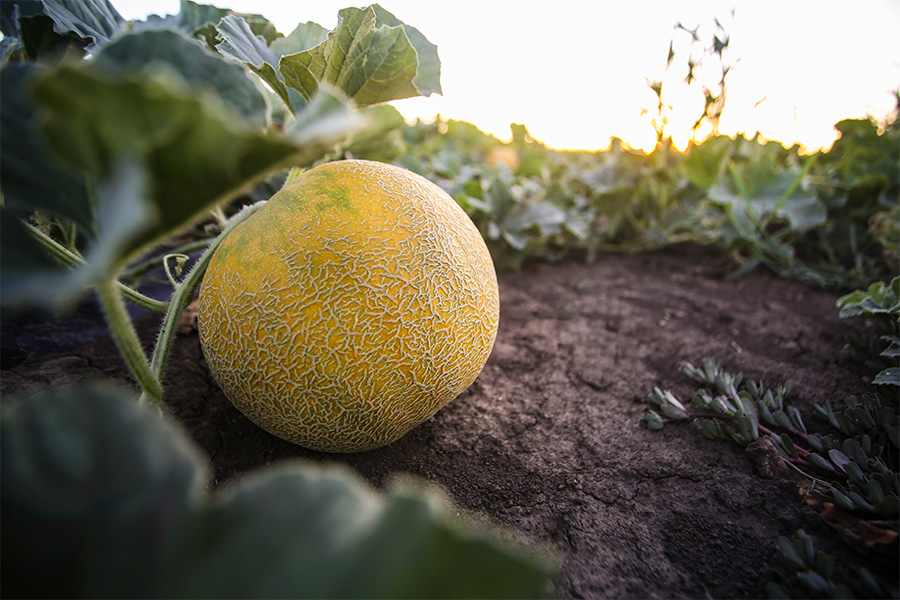Commercial Fruit
-

Price and expenditure elasticities at the retail level between 1960 and 1993 were estimated for 11 fresh fruits and 10 fresh vegetables by employing a composite demand system approach and using annual data. Most fresh fruits and vegetables were found to respond significantly to changes in their own prices but insignificantly
to changes in expenditures. The study partially incorporated the interdependent demand relationships between fresh fruits (vegetables) and all other commodities, yet effectively avoided the problems of insufficient degrees of freedom.Chung-Liang Huang and James E. Epperson
|
-

This publication was compiled to meet the needs of the growing cantaloupe industry in Georgia. It provides extensive information to help growers be successful in cantaloupe and specialty melon production.
Ted McAvoy and Timothy Coolong
|
-

This resource provides information for producers interested in commercial tomato production, and included information to help improve the profitability of their operations, whether they are new or experienced producers.
Ted McAvoy and Timothy Coolong
|
-

To be more competitive, Georgia blueberry producers have to increase their yields to match or better the average U.S. values. This increase can occur through an improvement of the agricultural practices and a better mastery of blueberry cultivation. This publication contains information to help Southern Highbush blueberry growers in Georgia maximize their profits.
Gerard W. Krewer, Esendugue Greg Fonsah, John Ed Smith, and R. Danny Stanaland
|
-

It is estimated that 2007 plant disease losses, including control costs, amounted to approximately $539.74 million. The value of the crops used in this estimate was approximately $4815.02 million, resulting in an 11.03 percent total disease loss across all crops included in this summary.
Alfredo Martinez
|
-

It is estimated that 2006 plant disease losses, including control costs, amounted to approximately $647.2 million. The value of the crops used in this estimate was approximately $4673.73 million, resulting in a 12.08 percent total disease loss across all crops included in this summary.
Alfredo Martinez
|
-

Both rabbiteye and highbush blueberries are produced in Georgia. The plants can produce a commercially viable crop for years. The long-term nature of the investment in the blueberry orchard calls for periodic updates on the situation of the blueberry industry. Information about the location of plants, varieties, plant age, and the use of cultural practices are important in decisions to allocate resources. This report provides insights otherwise unavailable to the industry and an overview of the Georgia blueberry industry, which helps to shape the production and marketing strategies that extend beyond our state boundaries. Summaries included in this report help in accurate assessment of potential economic losses from damages to blueberry plants and the feasibility of programs protecting the value represented by orchards.
Wojciech J. Florkowski
|
-

It is estimated that 2001 plant disease losses, including control costs, amounted to approximately $587.107 million. The value of the crops used in this estimate was more than $4.799 billion, resulting in a 12.23 percent total disease loss across all crops included in this summary.
Jean Williams-Woodward
|
-

It is estimated that 2000 plant disease losses, including control costs, amounted to approximately $572.34 million. The value of the crops used in this estimate was more than $4.376 billion, resulting in a 13.07 percent total disease loss across all crops included in this summary.
Jean Williams-Woodward
|